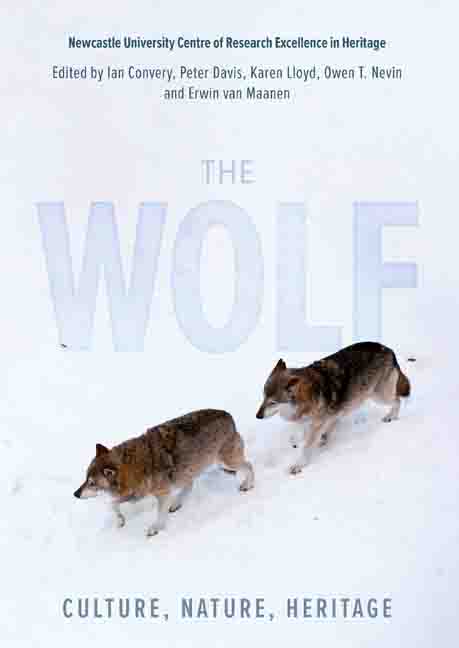Book contents
- Frontmatter
- Dedication
- Contents
- List of Illustrations
- Preface and Acknowledgments
- List of Abbreviations
- Poem: Trophic Cascade by Camille T Dungy
- Foreword
- Part I Imagining the Wolf
- Part II What Makes the Wolf
- Part III Return of the Wolf
- Part IV Personal Encounters
- Afterword: The Ecological Disadvantage of Living on an Island
- Glossary
- List of Contributors
- Index
4 - ‘Uuluesheued!’ The Historical Significance of the Wolf to Early Indo-Europeans
Published online by Cambridge University Press: 10 January 2024
- Frontmatter
- Dedication
- Contents
- List of Illustrations
- Preface and Acknowledgments
- List of Abbreviations
- Poem: Trophic Cascade by Camille T Dungy
- Foreword
- Part I Imagining the Wolf
- Part II What Makes the Wolf
- Part III Return of the Wolf
- Part IV Personal Encounters
- Afterword: The Ecological Disadvantage of Living on an Island
- Glossary
- List of Contributors
- Index
Summary
It is striking how many Anglo-Saxon and other Germanic medieval names contain an element referring to the wolf, mainly in the form of ‘wulf’ and ‘ulf’ or ‘olf’. Most of these names were – as far as we can tell – connected to the elite of medieval north-western Europe. Contemporary names such as Rudolph, like that of the famous Italian actor Valentino, Wolfgang, as in Wolfgang Amadeus Mozart, and Adolf, like that of the less glorious person of Hitler, are also derived from ‘wolf’ and originally mean ‘Counsellor Wolf’, ‘Wolf's Gait’ and ‘Noble Wolf’ [sic], respectively. In the Early Middle Ages the wolf was, compared to other animals, the undisputed number one in the naming of nobles and high-ranking clergy. Other animals that were common as namesakes are the bear, the wild boar and the raven, but they follow the wolf by a street length (Muller 1970, 4–10). Sometimes we find combinations of two animal names such as Arnulf (Eagle+Wolf), Beornwulf (Bear+Wolf), Ebrulf (Boar+Wolf) and Vulferam (Wolf+Raven). In the names, the wolf is also used in combination with alleged character traits, such as noble (Athelwulf, but also the previously mentioned Adolf), wise (Radulf), swift (Adrulf), bright (Bertulf), famous (Hrodulf) and big or strong (Erminiulf). But also with king (Cynewulf), earl (Arlulf) or ruler in general (Wulfric and Bodolf). Yet another category connects the wolf with warrior attributes, weapons or acts of war: Wulfgis (Wolf+Arrow), Bardolf (Ax+Wolf), Gandulf (Stick+Wolf), Wolfhelm (Wolf+Helmet), Randulf (Shield+Wolf), Herulf (Army+Wolf), Gundulf (Battle+Wolf), Wulfsige (Wolf+Victory). Apparently, the wolf's association with lofty qualities, especially in the areas of battle and power, was strong. Although the wolf is, unintentionally, still a name giver in the present day, the peak of wolf naming was clearly before the High Middle Ages. After that, we see wolf-based names in Anglo-Saxon and other Germanic cultures gradually disappear, and today they are almost completely erased from history.
- Type
- Chapter
- Information
- The WolfCulture, Nature, Heritage, pp. 47 - 56Publisher: Boydell & BrewerPrint publication year: 2023

